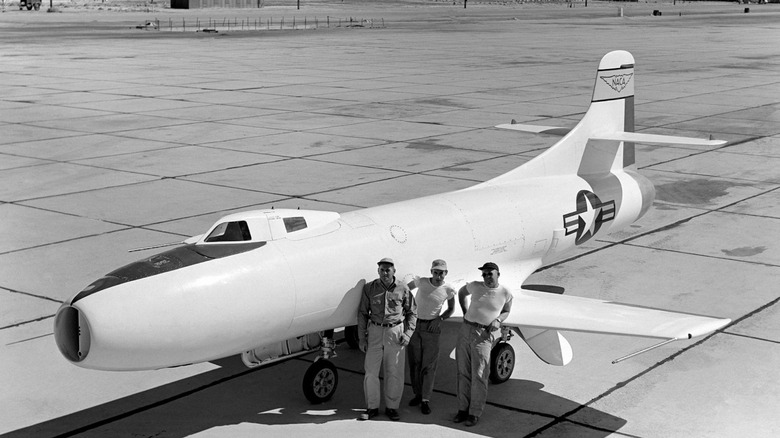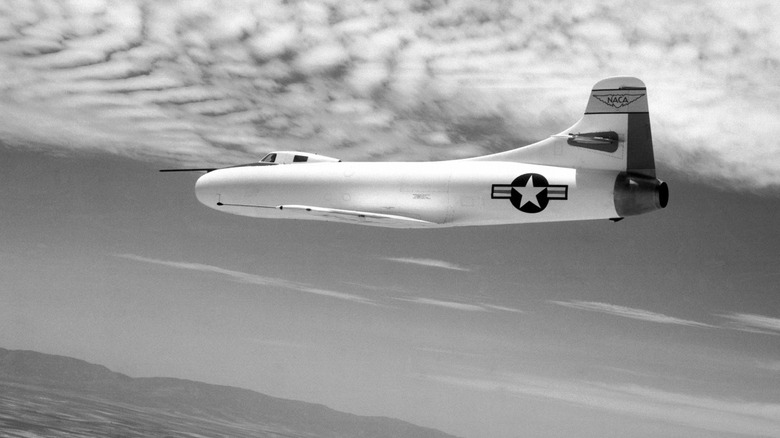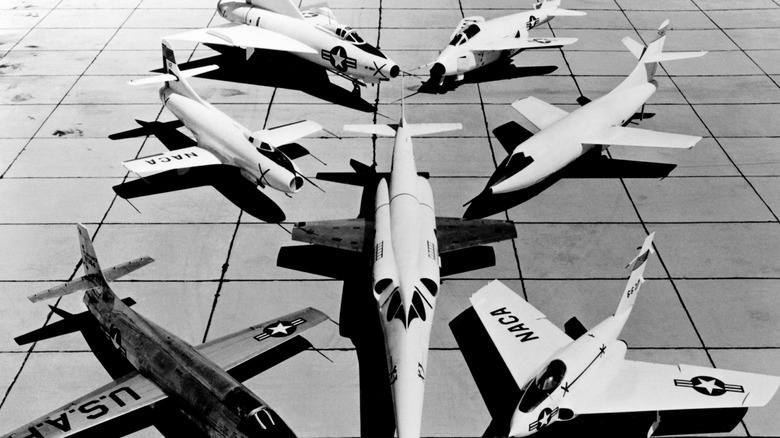Skystreak: An Early NASA Research Plane That Set Two World Speed Records
Whether on land, sea, or in the air, it takes a very special vehicle to break a world speed record. As Guinness World Records reports, the fastest boat on the planet is the Spirit of Australia, which, in November 1977, achieved a dazzling pace of 317.58 mph. Ken Warby built the wooden wonder himself as a hobby project, using an RAAF jet engine he'd purchased for $65. Up in the air, meanwhile, NASA has the resources to develop rather more elaborate speedsters. The D-558-I Skystreak is testament to that.
Early in the 1940s, NASA reports, some of the most advanced planes of the era were approaching the speed of sound. Aircraft that were designed for such, and that could produce results and data that would keep pilots safe as they continued to push the speed limits of flight, were needed.
The mighty and rather clinical-looking Skystreak aircraft were the record-breaking result.
The development of the D-558-I Skystreak
NASA, then known as NACA (National Advisory Committee for Aeronautics), had a hand in the project, as did the Bureau of Aeronautics with the U.S. Navy. The Douglas Aircraft Company was tasked with its construction at El Segundo, and the first of them was built in February 1947.
The Skystreak was intended, essentially, to go faster than almost any aircraft had gone before. Raw speed, however, had to be balanced with safety concerns. To this end, the aircraft included an emergency ejector device in the nose rather than a more conventional seat. Its engine was the hefty Allison J35-A-11, a powerhouse that sadly did not prove reliable in the long term: In May 1948, a broken component of the engine damaged the controls mid-flight, leading to a crash that killed Skystreak pilot Howard Clifton Lilly.
The Skystreak's time in service was marred by tragedy, but it also proved highly significant for the industry. Skystreak beat world record speeds not once, but twice.
What did the Skystreak accomplish?
The transonic-to-supersonic leap would finally be officially made in October 1947, when Chuck Yeager broke the speed of sound in Bell X-1. His legendary, blistering flight across the skies was the first verified trip to do so. In the process, it broke the record achieved by Skystreak that August.
Lt. Col. Marion Carl of the Marines reached approximately an average of 650 mph in an August 25 test flight. He flew the second of the craft to be built, less than a week after the inaugural Skystreak, flown by Cmdr. Turner F. Caldwell, first broke the record by achieving an average speed of 640.743 mph.
The speed of sound is approximately 761.2 miles per hour, meaning that the Skystreak didn't quite hit it, but it was a remarkably advanced aircraft. Future aircraft and wind tunnels were adapted, and perhaps even made possible in the first place, by the information provided by this aircraft and its pioneering pilots, designers, and the rest of the team pivotal to its development and operation.
As with its astonishing 86-astronaut space shuttle, the Skystreak is yet more evidence of NASA's ability to innovate.


